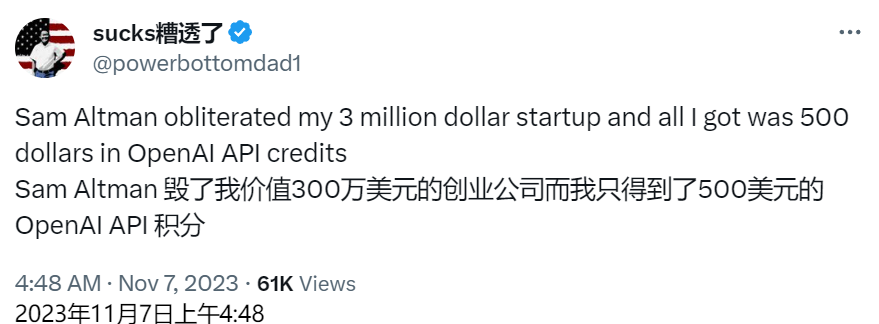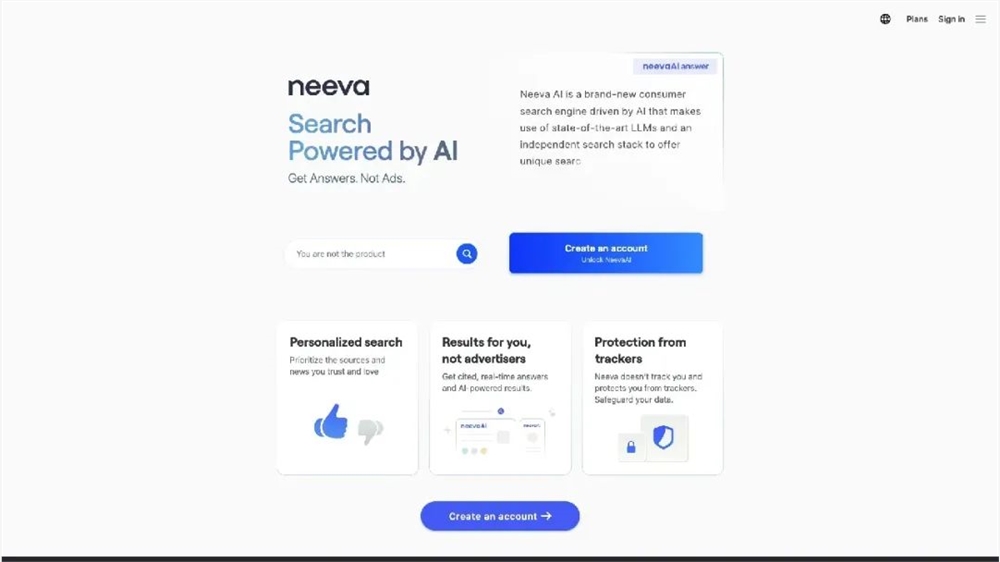What Pitfalls Did AI Startups That Failed in 2023 Encounter?
-
When it comes to the most attractive startup projects/companies this year, AI-related ones are undoubtedly on the list.
In this AI technology wave triggered by ChatGPT, entrepreneurs' faces are filled with both excitement and anxiety.
Star AI companies like OpenAI, Midjourney, and Stability AI have seen their valuations skyrocket and enjoy unlimited glory. Meanwhile, the domestic AI field has already become fiercely competitive. As of last month, the number of publicly disclosed large AI models in China alone has reached as high as 238.
Beyond major corporations, small and medium-sized entrepreneurial teams and independent developers are also flocking to the AI field, hoping to seize this historic opportunity to create impactful and valuable products or services. A plethora of small AI products focusing on niche market applications have emerged, presenting a thriving landscape across the AI startup sector.
However, beneath the prosperity lies inevitable bubbles. A harsh reality is that the majority of AI startup projects may ultimately meet with failure.
"Many AI startup teams passionately work overtime on projects that will lose significance within days," an AI entrepreneur told 'Top AI Player'.

OpenAI's November developer conference essentially announced the death of numerous AI startups.
Kai-Fu Lee, CEO of 01.AI, predicted at the 'MEET2024 Intelligent Future Conference' that excluding tech giants, only five or six major AI model companies will ultimately survive in the combined US-China market.
There is a website called "AI Graveyard" (https://dang.ai/ai-graveyard) abroad that documents nearly 200 AI projects that have ceased operations.
What are the reasons for the failure of these projects? How can entrepreneurs avoid repeating the same mistakes? Where does the long-term value of AI entrepreneurship lie? "Top AI Player" analyzed the functions, technical implementation methods, and reasons for failure of several typical projects, hoping to provide inspiration for AI players.
YC (Y Combinator) once summarized 18 ways startups fail, which are still applicable to AI ventures.
In general, the reasons are familiar: excessive spending, lack of profitability, insufficient computing power, and uncompetitive or undifferentiated products.
For specific projects in the 'AI Graveyard,' the failures are often due to inaccurate market demand assessment, unsustainable business models, or immature technology. AI entrepreneurs should learn from these failures to avoid repeating the same mistakes.
1. AI-Powered Search Engine: Neeva
Neeva is an AI-driven search engine that focuses on being ad-free and prioritizing user privacy. It was founded by former Google executives Sridhar Ramaswamy and Vivek Raghunathan in 2019, announced its shutdown in May 2023, and was acquired by Snowflake.
Undeniably, AI + search engine is a good business.

Former Neeva product official website
AI-powered search engines can better understand natural language queries, including deep comprehension and contextual analysis of complex queries, thereby providing more accurate and relevant search results.
In the search engine market, giants like Google and Microsoft already dominate, with vast user bases and deep technological accumulations. Building a search engine to compete with these market leaders is a capital-intensive game.
Moreover, users' reliance on existing search engines (such as Google, Bing, etc.) has solidified their usage habits. To shift users to a new search engine, it is necessary to provide a significantly superior search experience, meeting or exceeding user expectations in terms of search result relevance, speed, interface design, and other aspects.
Moreover, finding an effective monetization model poses a significant challenge. Relying on advertising revenue may make it difficult to compete with market leaders, while other monetization strategies, such as subscription services, might struggle to attract a large user base.
In today's climate where data privacy and security are increasingly prioritized, new search engines must also ensure they can protect user privacy and data security. This is not merely a technical and legal issue but also involves building brand recognition and user trust.
2. AI Pickup Lines Generator
AI Pickup Lines could generate opening lines on various themes and styles, launched in late 2022 but was shut down in early March 2023.

Former Pick up lines product official website
Users can generate 10 free pickup lines daily with Pick up Line. Subscription plans are available at $9.99 per month or $99.99 per year, allowing unlimited generation of pickup lines with flexible keyword selection. Additionally, a comprehensive database containing over 100,000 lines across various themes and styles can be purchased for $499.99.
This is a typical application built upon large language models, similar to AI weekly report generators or AI-generated girlfriend appeasement copywriting. As large language models become increasingly powerful and widespread, the competitive barriers for such products will continue to diminish.
Moreover, such products are typically more entertaining than practical, often perceived as amusement rather than utility tools. While they may pique users' curiosity in the short term, they lack long-term practical value.
AI-generated pick-up lines are clearly insufficient to handle the complex and ever-changing social scenarios in real life, including the subtle emotions and nonverbal factors in social interactions.
In terms of profitability models, while such products may generate revenue through advertisements or one-time purchases, long-term user retention and profitability remain challenging. The key issue these applications need to address is how to keep users engaged and deriving continuous value from them.
3. AI Photo Editing Tool: PhotoFix
According to the retrieved information, PhotoFix.io was created in early 2022, and the website was shut down for maintenance in early April 2023. The main functions of PhotoFix included: improving photo quality and clarity; enhancing resolution; removing elements from photos, such as people, objects, or backgrounds; and generating images from text, such as Breaking Bad, Studio Ghibli animations, and realistic portraits. However, the AI photo editing software market is already saturated, with many established products like Adobe Photoshop, Lightroom, and various mobile apps dominating the market.
Additionally, with the user education provided by numerous AI portrait apps like Lensa AI and EPIK, if a new AI photo editing tool does not significantly differentiate itself from existing products, it may struggle to attract users.
4. AI-Generated Game Simulator: Fablesimulation
Fablesimulation's creation date is unknown, but it was added to the 'AI Graveyard' project on March 21, 2023.
This is an online platform that allows users to program, train, and interact with intelligent agents in a virtual environment. Fablesimulation's ultimate goal is to build a thriving online metaverse with 1 million artificial intelligences, where people can live, work, and even establish romantic relationships.
Although the concept appears creative and forward-thinking, it has not been sufficiently validated or tested, lacking clear target users and scenarios**.**
Moreover, it requires users to program and train agents in the virtual world, which undoubtedly raises the barrier to user participation. At the same time, it also faces challenges in multiple aspects such as technical implementation difficulty, sustainability of business models, security and privacy issues, hardware requirements, and social ethical problems.
"Moat" is a term favored by many developers and investors, as it indicates how a company can prevent competitors from taking away its business.
However, not all AI startups can establish their own "moat" in the industry.
According to analysis by "Top AI Player," most of these failed AI products are typical AIGC applications that suffer from severe homogenization within their respective fields, making it difficult to differentiate themselves from competitors.
Of course, some products have also encountered difficulties due to insufficient funding and excessively high investment costs.
1. Identify Niche Markets and Build Product Barriers
The rapid rise of generative AI enables more developers to integrate AI functionalities into their products without rebuilding models from scratch.
The "API integration" approach has given rise to a new wave of AI startups. With the help of APIs, developers can build corresponding AI products on platforms by simply designing front-end product interfaces.
Most developers have built applications of various sizes with the help of companies like OpenAI and Mistral.
However, this approach inevitably carries risks associated with the platforms.
Ben Parr, co-founder of OctaneAI, shared that OctaneAI once integrated chatbot technology with Facebook Messenger. But when Facebook became embroiled in a data leak scandal, it suddenly prohibited any developers from creating chatbots on Messenger, which introduced product risks for developers. Another example is Jasper.ai, an AI startup built on GPT. From projecting annual revenues of $150 million at the beginning of the year to initiating layoffs, it took only six months. The reason was simple: Jasper.ai's product was developed based on the GPT-3 model, and the emergence of GPT-4 led to its technological obsolescence and subsequent decline.
Data from Semrush indicates that since the launch of GPTs, web traffic for similar products has decreased by more than half.
The CEO of Xiaoice mentioned at the "Meet2024 Intelligent Future Conference": "API calls do not reflect the creative value of generative AI."
As Ben Parr summarized after experiencing risks, "Try not to build products that API platforms can easily replicate."
For example, developers can create a chatbot using databases that OpenAI cannot access, such as extensive painting materials, planning proposals, medical data, email content, etc.
Compared to building large models, owning your own dataset is relatively less costly and can help establish product barriers.
Additionally, creating products tailored to specific vertical markets with clearly defined target audiences offers more advantages than horizontally expanding AI product functionalities.
Most of the failed AI products mentioned above are general-purpose tools targeting the general public, which inherently limits their ability to differentiate. Large tech companies can invest more capital and computing power to develop universal AI tools, squeezing the survival space for startups.
Independent developer Feixia told "Top AI Players": "Regardless of the sector, products focused on specific vertical domains undoubtedly have more advantages. Specialized data, interfaces, and compliance methods are things large enterprises simply cannot provide."
2. Raise sufficient funds, or invest at a lower cost
"Burning money" is a key term often mentioned in AI product development. However, a report by the renowned US venture capital firm a16z indicates that nearly half of the top 50 generative AI products by monthly visits did not raise any external capital and were self-funded.
Building and training proprietary models often requires millions of RMB, while fine-tuning existing models or integrating GPT-based applications can save substantial costs. In other words, teams developing AI products can choose a lower-cost approach.
Fan Bing, author of Growth Hacker, mentioned in a podcast: "(In the AI field) funding is abundant and aggressive, but the burn rate is even more intense."
From this perspective, lacking funds might ironically serve as a form of "reverse positioning" strategy.
Some developers humorously describe investments in AI products with the phrase, 'If you don't manage money, money won't leave you.'
'Top AI Player' also consulted several developers and startup teams, finding that a project can be launched at zero cost without considering labor expenses and future commercialization efforts.
For instance, numerous GPT-based wrapper projects on GitHub demonstrate high potential profits, with the earliest batch of "middlemen" already achieving monthly revenues exceeding 100,000 yuan. However, securing funding might be a common challenge in the AI field this year. As one investor jokingly remarked, the most frequent phrase at offline venture capital meetings is "Okay, let's revisit this later." According to a previous report by "Xiao Fan Zhuo," AI entrepreneur Steven noted that many investors are merely pretending to evaluate AI opportunities.
Of course, for some developers, the product itself is the priority, with the business model often being a secondary consideration.
"Although we haven't raised funds yet, our next small goal is to first gain some stable users who are willing to pay voluntarily," said Feixia.
Whether it's insufficient funding or lack of technological barriers, the more important prerequisite is to capture user needs. YC founder Paul Graham believes that "in a sense, there's only one reason why startups fail: no one needs what you're making."
Currently, most products that focus on short and fast development cycles choose overseas markets, while individual independent developers are passionate about exploring various innovative applications of AI technology.
Concentrating on the target user group and identifying the right product positioning—these are the key reasons behind all successful entrepreneurial endeavors.
Of course, there are far more buried product achievements than those mentioned above, and more AI products may disappear along the way. If there is any secret to success, it is to never stop exploring AI-native applications in the AI era.
